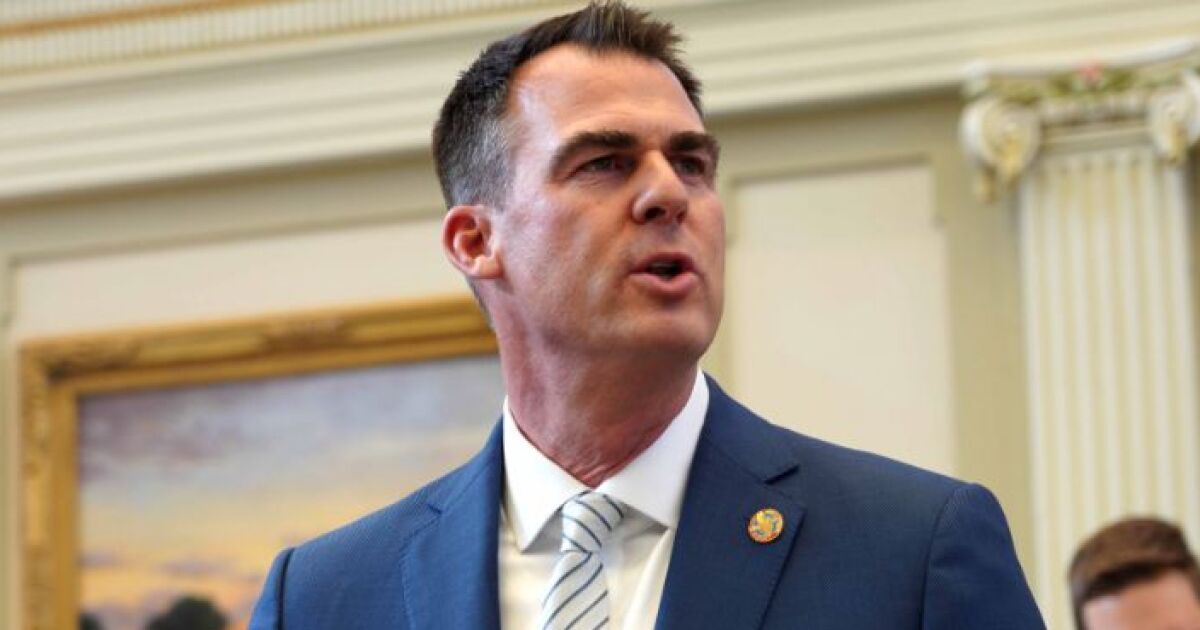Oklahoma governor targets tax cuts, additional reserve fund in budget
3 min read
Oklahoma would cut taxes, create a reserve fund, and launch an expanded school voucher program under a fiscal 2024 budget proposed by Gov. Kevin Stitt.
The Republican governor, who started his second term in office last month, outlined the proposals on Monday in his State of the State Address and spending plan that were both short on details.
“Oklahomans sent a clear message last November when they overwhelmingly voted for our vision: to shrink the size of government, to cut taxes, and to let the free market flourish,” Stitt said in prepared remarks. “We need to return excess revenue to the people, not grow government.”
With the state flush with cash, Stitt called for $655.7 million in tax cuts by eliminating the 4.5% state sales tax on groceries, a move he unsuccessfully advocated for last year, and reducing personal and corporate incomes tax rates.
Oklahoma is projecting record tax collections in fiscal 2023, following record tax receipts in fiscal 2022, according to budget documents. Fiscal 2024 general revenue is estimated to total nearly $9.13 billion, an increase of $133.1 million, or 1.5% over revised fiscal 2023 projections.
While the state has amassed about $1.45 billion in its rainy-day and revenue stabilization funds, as well as a sizable budget surplus, Stitt proposed creating an Oklahoma Legacy Fund with $1 billion in unspent general revenue.
The aim of the fund “is to position the state to build additional reserves and generate revenues over the long term through a diversified investment strategy,” according to budget documents.
The governor also pushed for expanded school choice in his address, allocating $130 million in his budget to fund education savings accounts to pay for “eligible” K-12 education expenses.
“Every child deserves a quality education that fits their unique needs, regardless of economic status, or background,” Stitt said in his speech. “Let’s fund students, not systems.”
His press office said details of the accounts or any school choice policies will be up to the legislature, where Stitt’s Oklahoma Empowerment Act failed to pass last session.
Governors in several states are embracing school vouchers even as the nation’s most expansive program in Arizona has proven to be costlier than expected.
Stitt’s education spending plan includes $100 million each for programs to create schools focused on innovation and for a reading initiative. Another $50 million would be used for performance-based teacher pay raises.
“The House will continue to make sure any education policy passed works well in all parts of our state,” Republican House Speaker Charles McCall said in a statement, adding his chamber “has been proactively addressing many of the issues Gov. Stitt identified as priorities.”
Democrats took issue with many of those priorities.
“Rather than siphoning taxpayer dollars into a voucher scheme that will defund schools, we are calling on our colleagues to put the $4 billion in savings they are so proud of to good use addressing real problems like COVID learning loss and employment shortages in education and healthcare,” Senate Democratic Leader Kay Floyd said in a statement,
On the bond front, payments on the state’s approximately $2 billion of net tax-backed debt will decline slightly in fiscal 2024 and 2025.
“After FY 2025, total debt service declines substantially when several series of bonds issued by the Oklahoma Capitol Improvement Authority are scheduled to mature,” budget documents said. “Data suggests that the state has sufficient capacity to bond fund important priorities.”







